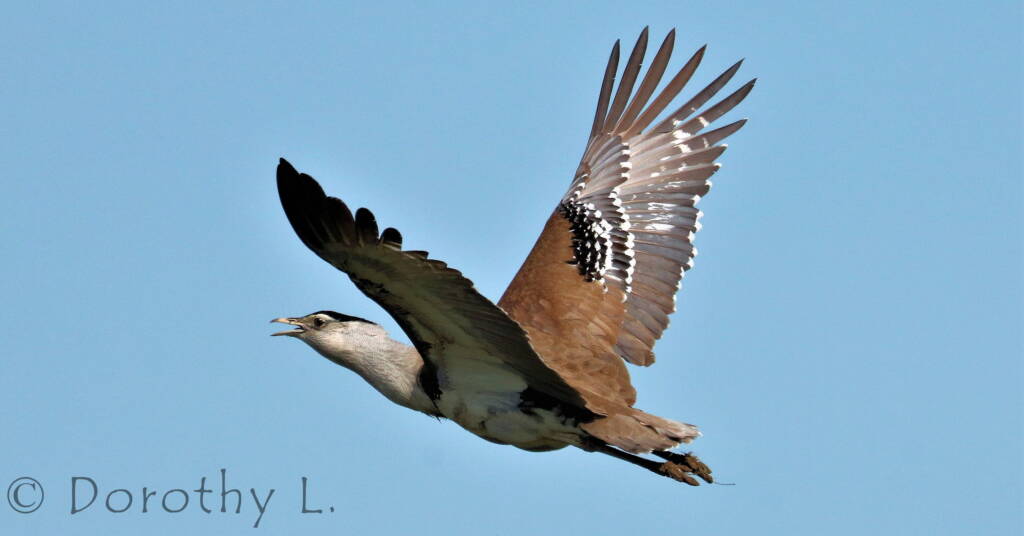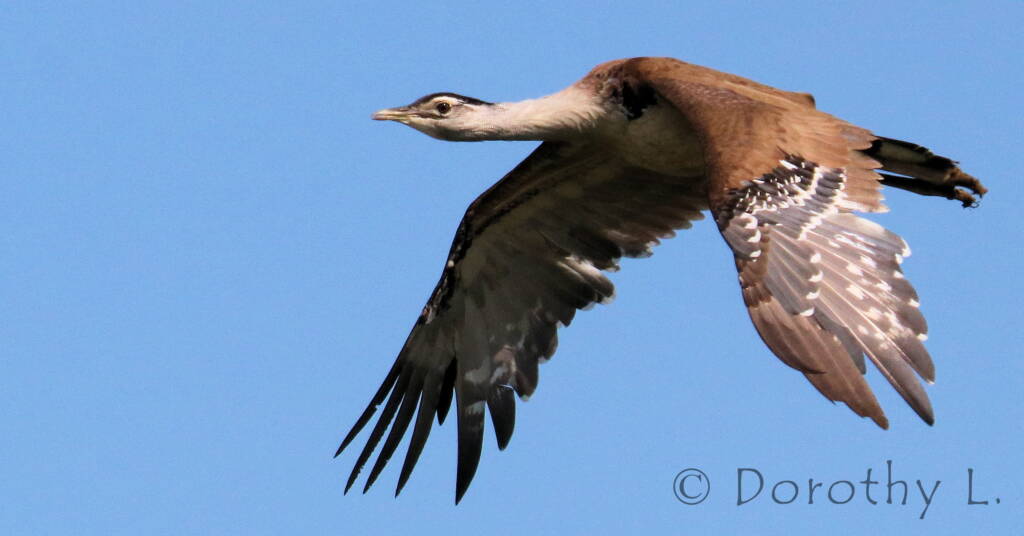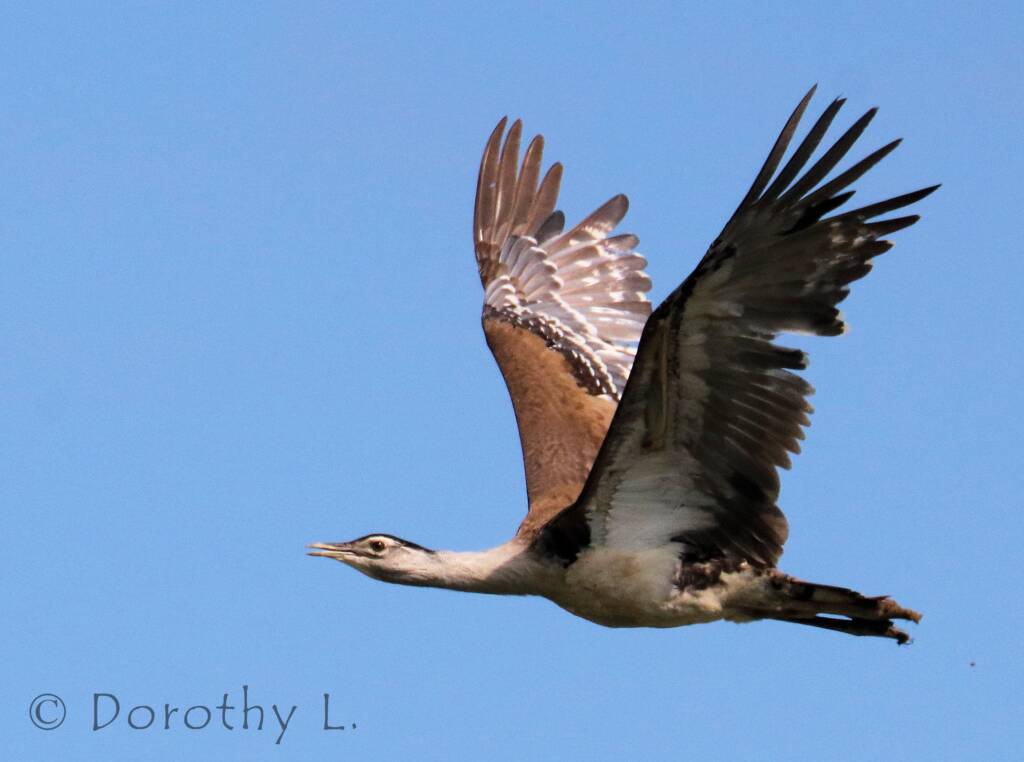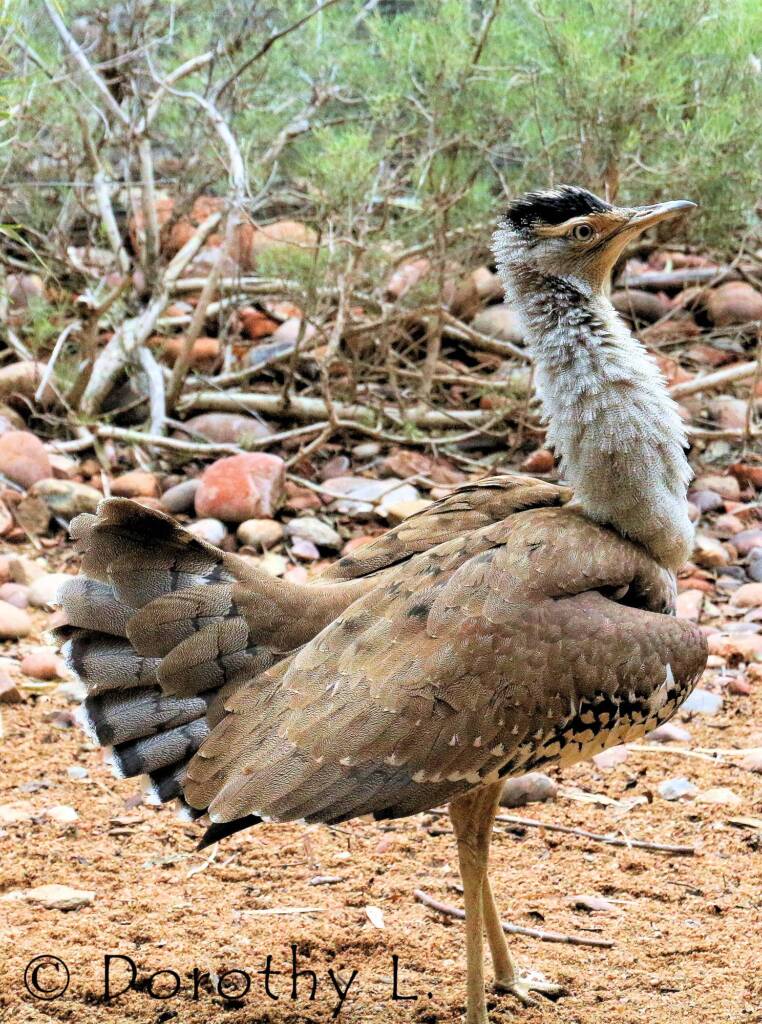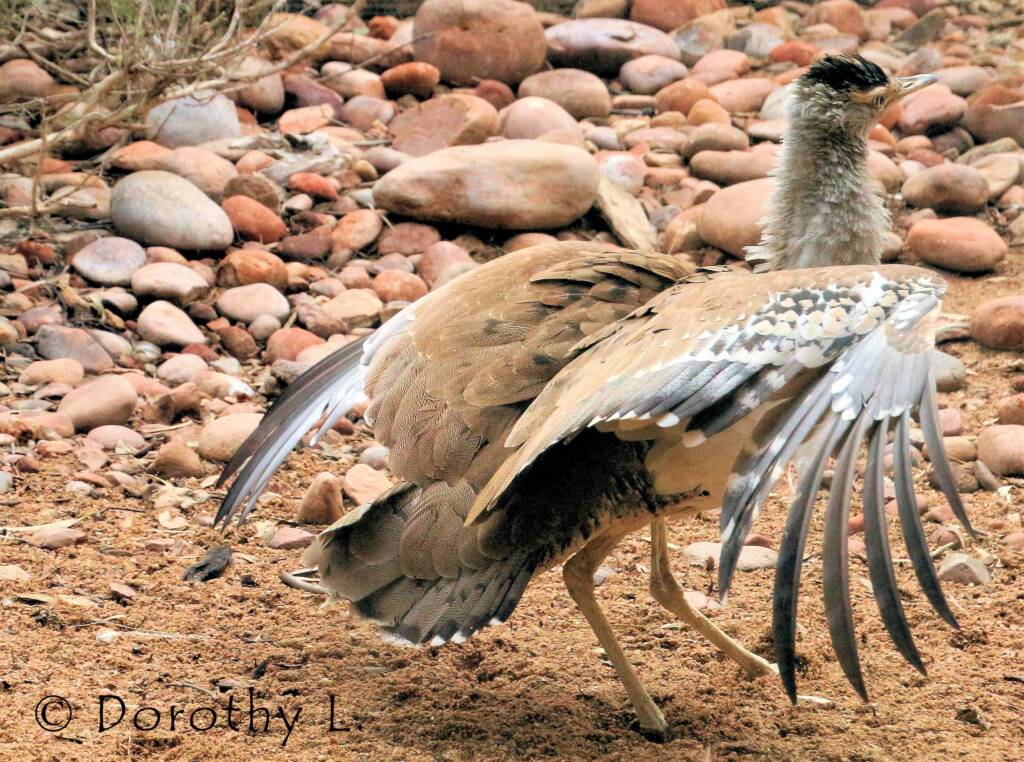Australian BustardAustralian Bustard – mating call & plumage
The Australian Bustard (Ardeotis australis) is an amazing large ground dwelling bird, with a slight crest, white eye-brow, speckled neck with dark markings and black crown. The wings have bold black and white markings.
One of Australia’s largest birds, the Australian Bustard stands at up to one metre tall with a wingspan of up to 2.3 metres (which is at least twice the height). The males can weigh between 5-10 kilograms, being up to three times heavier than the females at 2-3 kilograms.

The Bustard has what appears to be a ‘snooty’ appearance, as it walks in a sedate manner, holding its head up high. If disturbed it will walk away, whilst still watching, although it can fly when needed.

During their breeding season the Australian Bustard males inflate a large throat sac, that produce a loud, deep roaring noise, whilst they strut around with their tails cocked high. They are known only to breed once a year.
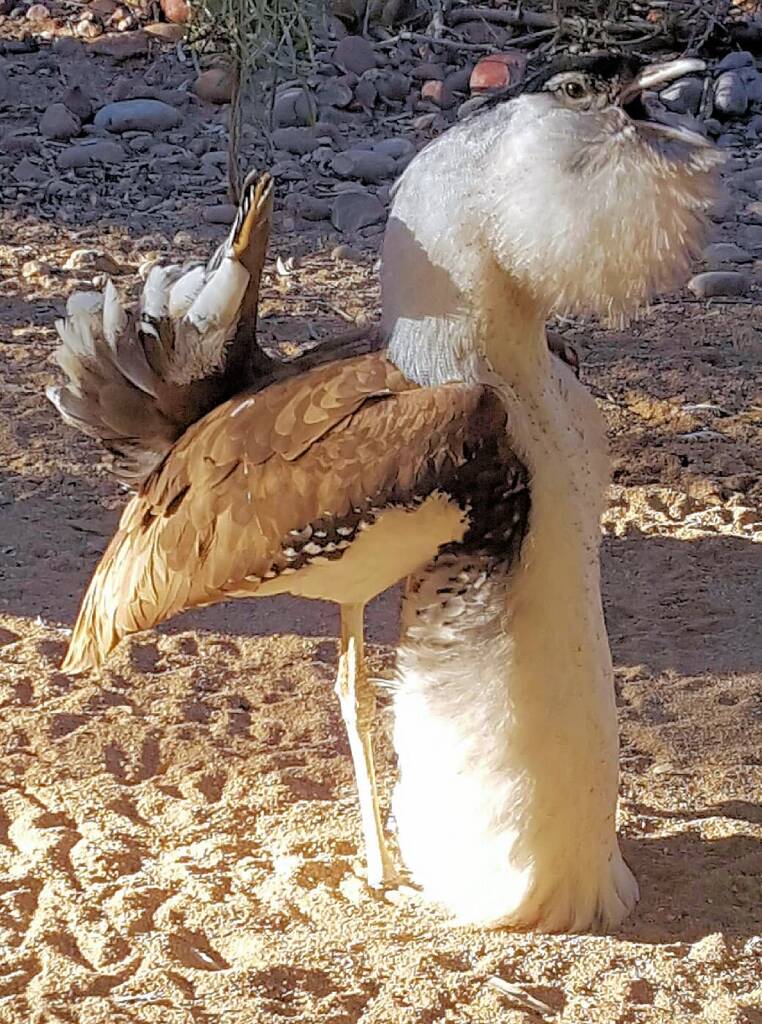
The female lays a large, olive-green egg on bare ground or in grass, usually where the parent bird has a good view of any approaching predators. The female keeps a low profile, being well camouflaged, whilst she incubates and cares for the young.
A nomadic bird, it can also be found in small groups. They fly to areas where food is plentiful, being capable of travelling long distances. They are omnivorous and will eat almost anything. They are known to eat locust, mice and even whole cane toads without any apparent effects.
They were once widespread across much of mainland Australia, in open habitats. They are now increasingly rare or extinct in the south, especially in regions that are populated, but are still seen in the northern parts of Australia. They are found mainly in grassland, open savannah woodland, flood plains and open agricultural regions across the northern parts of Australia and southern New Guinea.
Common name
Also called the Plains Turkey, Wild Turkey and Bush Turkey. The Brush Turkey is a name applied to another species known alternatively as the Brush-turkey.
Photos © Dorothy L
Click to the next page to check out our video and other images of this amazing bird.
More photos of the Australian Bustard from the Alice Springs Desert Park.


Images © CK Leel / Images © Ausemade PL
- Scientific classification
- Kingdom: Animalia
- Phylum: Chordata
- Class: Aves
- Order: Otidiformes
- Family: Otididae
- Genus: Ardeotis
- Species: A. australis
- Binomial name: Ardeotis australis
Australian BustardAustralian Bustard – mating call & plumage
BirdsApostlebird Australasian Darter Australasian Figbird Australasian Gannet Australasian Grebe Australasian Pipit Australasian Robins Australasian Shoveler (Spatula rhynchotis) Australasian Wrens Australian Babblers Australian Bustard Australian Chats Australian Magpie Australian Pelican Australian Pratincole (Stiltia isabella) Australian White Ibis Bassian Thrush Black-faced Cormorant Black-faced Woodswallow Black Swan Bowerbirds Brolga Brown Songlark Channel-billed Cuckoo Cinnamon Quail-thrush Cormorants Cuckooshrikes and Allies Dotterels Lapwings Plovers Doves & Pigeons Emu Fairy Martin Finches Grey Fantail Grey Teal Honeyeaters Kingfishers Little Friarbird Little Grassbird Magpie-lark Masked Woodswallow Noisy Pitta Olive Whistler Paradise Riflebird Pardalotes Parrots Pheasant Coucal Pied Butcherbird Rainbow Bee-eater Raptors Rufous Fantail Redthroat Rufous Bristlebird Silver-crowned Friarbird Torresian Crow Waders Welcome Swallow (Hirundo neoxena) Whiskered Tern (Chlidonias hybrida) White-browed Woodswallow White Capped Noddy White-faced Heron White-necked Heron Willie Wagtail Yellow-throated Scrubwren

